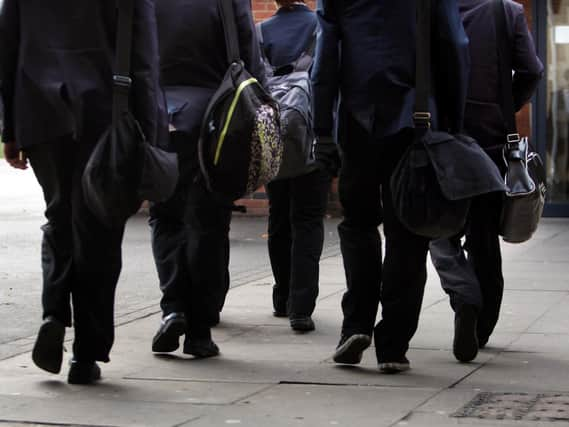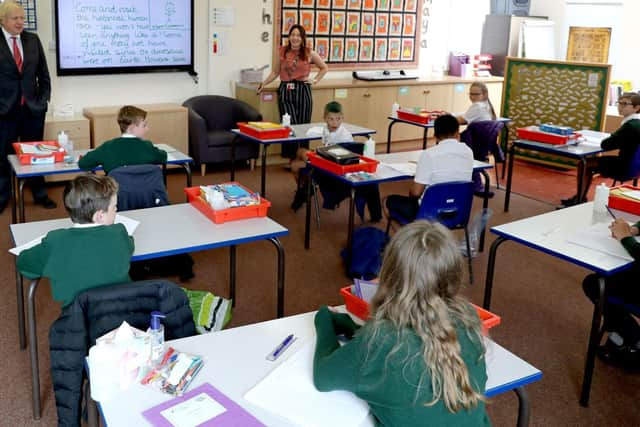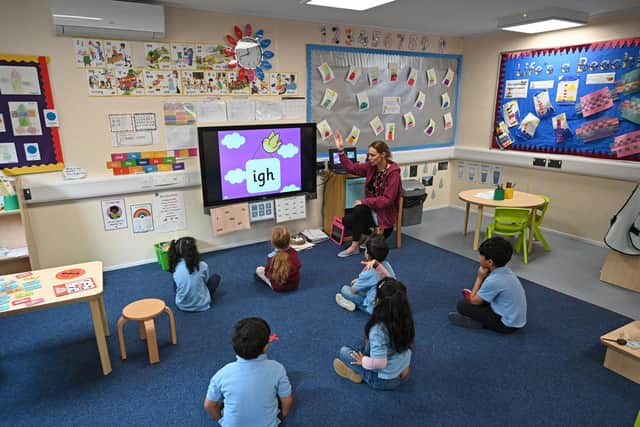Back to school in Banburyshire post lockdown - how will it work?


Government guidance for the start of the new term asks schools and school nurseries to manage a massive task in minimising the risk of coronavirus among pupils and their families - and staff.
A spokesman for Oxfordshire County Council (OCC) said: "The Department for Education has a clear expectation that all pupils in all year groups will return to school full-time from the beginning of the autumn term."
Advertisement
Hide AdAdvertisement
Hide AdSchools will have to wait for government advice on face masks, he said, but among other things, they will have to attempt to maximise distancing, enforce 'robust hand and respiratory hygiene' and enhance cleaning.


School lunches should be available. Schools bosses expect kitchens to be fully open from the start of term and normal legal requirements will apply about provision of food to pupils who want it, including for those eligible for free school meals or universal infant free school meals. School kitchens can continue to operate, but must comply with the guidance for food businesses.
School transport is fraught with difficulty with complicated sets of distancing, depending on whether it is dedicated school transport or public transport.
The Government guidance says advice for passengers on public transport (to adopt a social distance of two metres from people outside their household or support bubble or a ‘one metre plus’ approach where this is not possible) will NOT apply from the autumn term on dedicated school transport.
Advertisement
Hide AdAdvertisement
Hide AdPupils should use hand sanitiser getting on and off buses which should have extra cleaning. There should be organised boarding and distancing between seats 'where possible'. And there should be use of face coverings for children over 11 years if for example, 'they are likely to come into very close contact with people outside of their group or who they do not normally meet'.


A county spokesman said: "Transport will be provided for all pupils entitled to free home to school transport in various forms which include coaches, minibuses and taxis and other means of travel. Parents and carers of these pupils will be contacted directly about arrangements.
"For children not entitled to free home to school transport, hoping to use public buses; COVID-19 social distancing requirements mean there is a high likelihood of restricted capacity on existing routes. Parents are being encouraged to consider a range of transport options.
"If the school is in walking or cycling distance, then this should be the first consideration, as although public transport is operating it is likely to be at reduced capacity. The county council is working with bus companies to secure as much capacity as possible and reduce any changes to routes or timetables.
Advertisement
Hide AdAdvertisement
Hide Ad"If walking, cycling or use of the bus is not possible or appropriate and parents are planning to drive their child to school, then travel in the car should be based on government guidance."
Oxfordshire County Council provides a spare seats scheme and parents/carers can apply to pay for any spare seats on routes secured for entitled pupils. The criteria are published on the council’s website here.
If there is an outbreak of coronavirus the county council's public health department, liaising with the Department for Education, will decide on school closures and other local lockdown measures. Schools are expected to have 'remote learning' plans in place for pupils who need to self-isolate. School closures would mean a return to school access for vulnerable children and children of critical workers.
Guidance for contingency plans and what is expected is here.
Advertisement
Hide AdAdvertisement
Hide AdSchool employers must make sure a risk assessment has been undertaken to identify the measures needed to reduce the Covid-19 risks so far as is reasonably practicable and make the school COVID-secure. Guidance from the education department is here.
For parents of children with Special Educational Needs and Disabilities (SEND) provision certain temporary 'flexibilities' have been allowed since May. A change in the law said local authorities and health commissioners must use ‘reasonable endeavours’ to arrange the specified special educational/health care provision in education, health and care plans. However these flexibilities should be removed as soon as possible to enable sufficient support for these children to return to school.
* Ofsted inspections will remain suspended for the autumn term but inspectors will visit a sample of schools to discuss how they are managing the return to education.